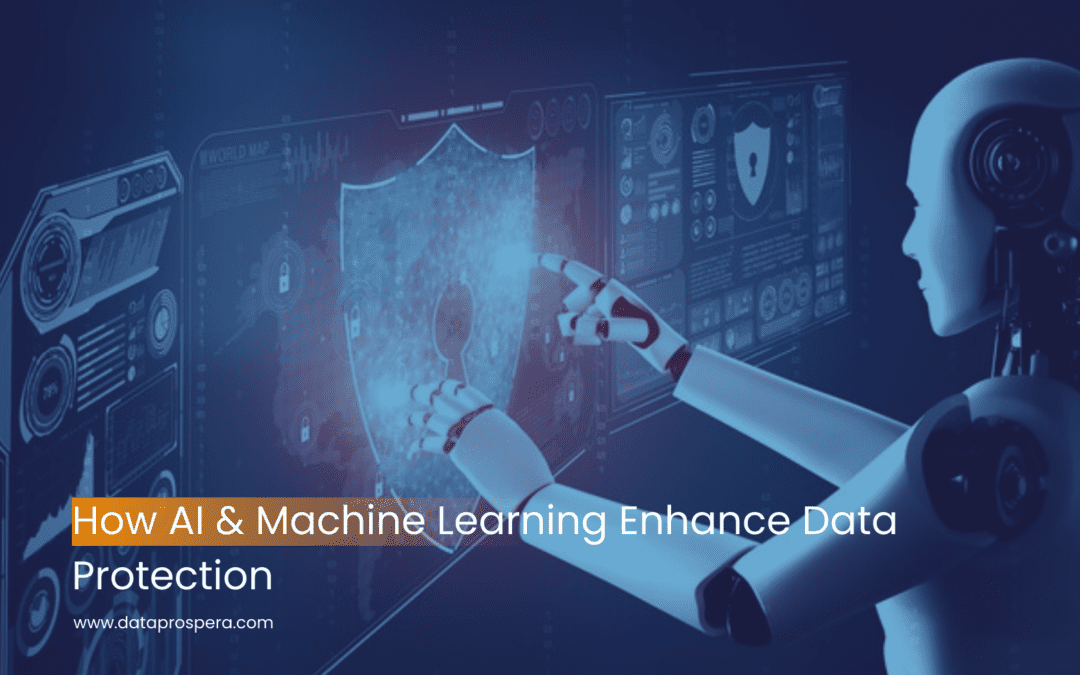As cyber threats become more advanced and pervasive, traditional security systems are no longer sufficient to protect sensitive data. Enterprises and public institutions alike are turning to Artificial Intelligence (AI) and Machine Learning (ML) to strengthen their data protection strategies. These intelligent technologies offer real-time threat detection, predictive risk analytics, and adaptive responses that evolve with emerging threats.
Why Data Protection Needs AI and ML
Modern digital ecosystems generate massive volumes of data—everything from user activity and financial transactions to IoT sensor logs and cloud workloads. This complexity makes it difficult for human analysts or rule-based systems alone to detect sophisticated breaches or subtle anomalies.
AI and ML step in to fill this gap by:
- Continuously monitoring data flows
- Learning from previous incidents
- Recognizing behavioral patterns
- Responding to anomalies in real time
By doing so, they create a proactive rather than reactive approach to data security.
Core Applications of AI & ML in Data Protection
1. Anomaly Detection
ML algorithms can identify patterns of normal system behavior and flag deviations that may indicate data breaches, insider threats, or malware activity.
- Detects threats not defined in traditional signature-based systems
- Reduces false positives through intelligent learning
- Enables early intervention before damage is done
2. Behavioral Analytics
AI models track how users typically interact with systems, data, and applications. Any deviation—such as accessing restricted files or logging in at odd hours—can trigger alerts.
- Supports zero-trust security architectures
- Helps in insider threat detection
- Enhances access control enforcement
3. Automated Threat Response
AI can integrate with cybersecurity tools to automate responses to threats. For example, it can isolate compromised endpoints, block suspicious IPs, or restrict data access within seconds of detecting a threat.
- Speeds up incident response
- Minimizes potential data loss
- Reduces the burden on human security teams
4. Data Classification & Encryption
ML tools can classify sensitive data automatically—tagging personal, financial, or health-related data—and ensure it is encrypted or access-restricted.
- Maintains compliance with regulations like GDPR and PDP
- Supports data governance policies
- Prevents accidental exposure of sensitive data
5. Predictive Threat Intelligence
Using global threat data and historical patterns, AI systems can predict emerging threats and recommend security policy updates or risk mitigation strategies.
- Supports proactive security planning
- Enhances organizational resilience
- Keeps pace with evolving attack vectors
Real-World Use Cases
- Financial Sector: Banks use AI to detect fraudulent transactions in real time.
- Healthcare: ML algorithms help safeguard patient data in compliance with HIPAA regulations.
- Cloud Providers: Use AI to dynamically allocate resources while monitoring for abnormal access patterns.
Challenges to Consider
While AI and ML bring robust capabilities, they are not without limitations:
- Data Privacy: Using sensitive data to train models must comply with privacy regulations.
- Model Explainability: Some AI decisions may be hard to interpret, complicating audits.
- False Positives: Improper training can still result in inaccurate threat detection.
Organizations should complement AI systems with strong governance, skilled personnel, and ethical use frameworks.
The Future of AI in Data Protection
As cyber threats evolve, AI and ML will become foundational elements of enterprise security. From intelligent firewalls to autonomous security operations centers (SOCs), these tools will enable faster, smarter, and more resilient defense mechanisms.
Investing in AI-driven security today not only enhances protection but also prepares organizations for the compliance and resilience challenges of tomorrow.


Recent Comments